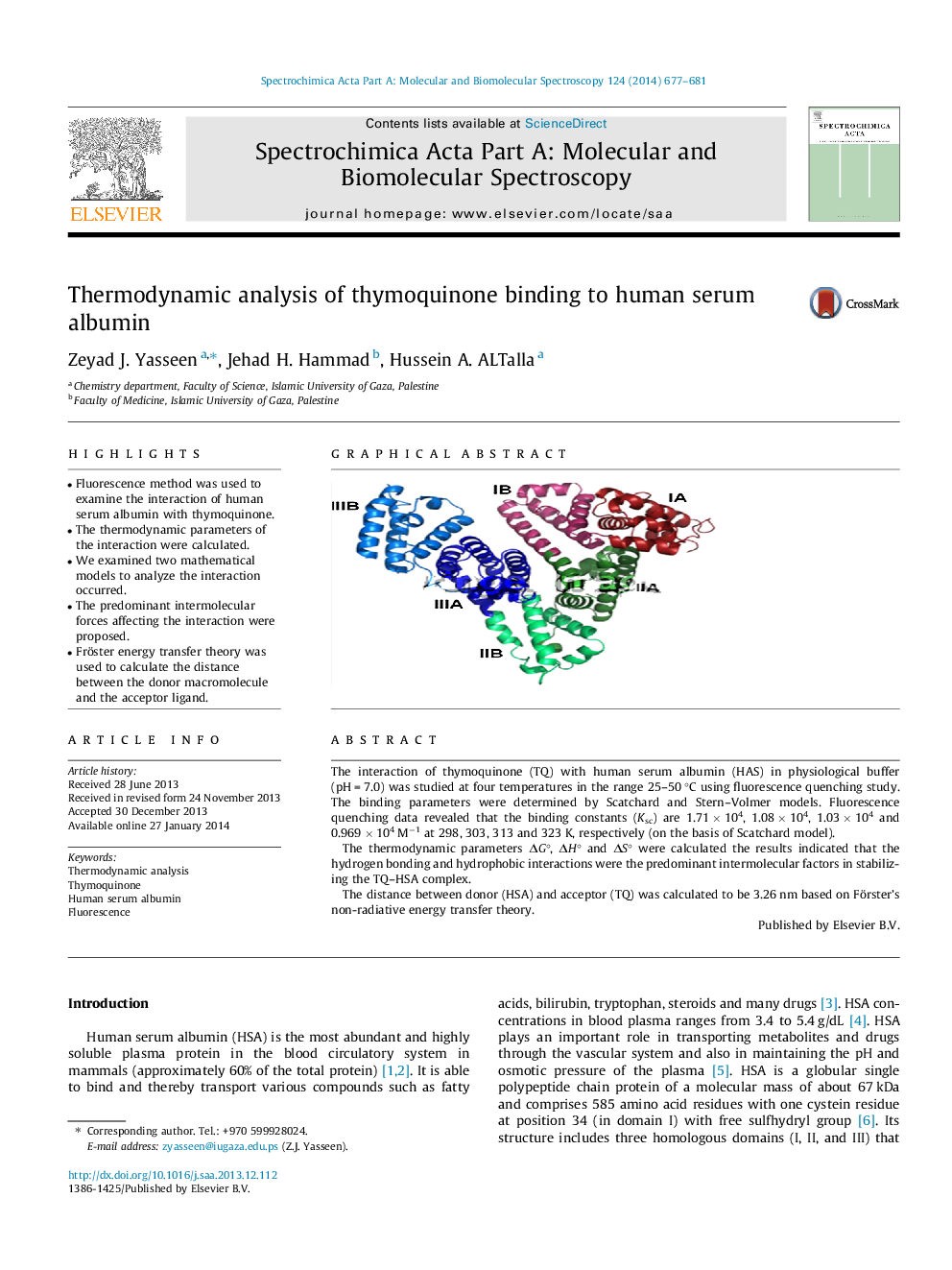| Article ID | Journal | Published Year | Pages | File Type |
|---|---|---|---|---|
| 1234340 | Spectrochimica Acta Part A: Molecular and Biomolecular Spectroscopy | 2014 | 5 Pages |
•Fluorescence method was used to examine the interaction of human serum albumin with thymoquinone.•The thermodynamic parameters of the interaction were calculated.•We examined two mathematical models to analyze the interaction occurred.•The predominant intermolecular forces affecting the interaction were proposed.•Fröster energy transfer theory was used to calculate the distance between the donor macromolecule and the acceptor ligand.
The interaction of thymoquinone (TQ) with human serum albumin (HAS) in physiological buffer (pH = 7.0) was studied at four temperatures in the range 25–50 °C using fluorescence quenching study. The binding parameters were determined by Scatchard and Stern–Volmer models. Fluorescence quenching data revealed that the binding constants (Ksc) are 1.71 × 104, 1.08 × 104, 1.03 × 104 and 0.969 × 104 M−1 at 298, 303, 313 and 323 K, respectively (on the basis of Scatchard model).The thermodynamic parameters ΔG°, ΔH° and ΔS° were calculated the results indicated that the hydrogen bonding and hydrophobic interactions were the predominant intermolecular factors in stabilizing the TQ–HSA complex.The distance between donor (HSA) and acceptor (TQ) was calculated to be 3.26 nm based on Förster’s non-radiative energy transfer theory.
Graphical abstractFigure optionsDownload full-size imageDownload as PowerPoint slide
